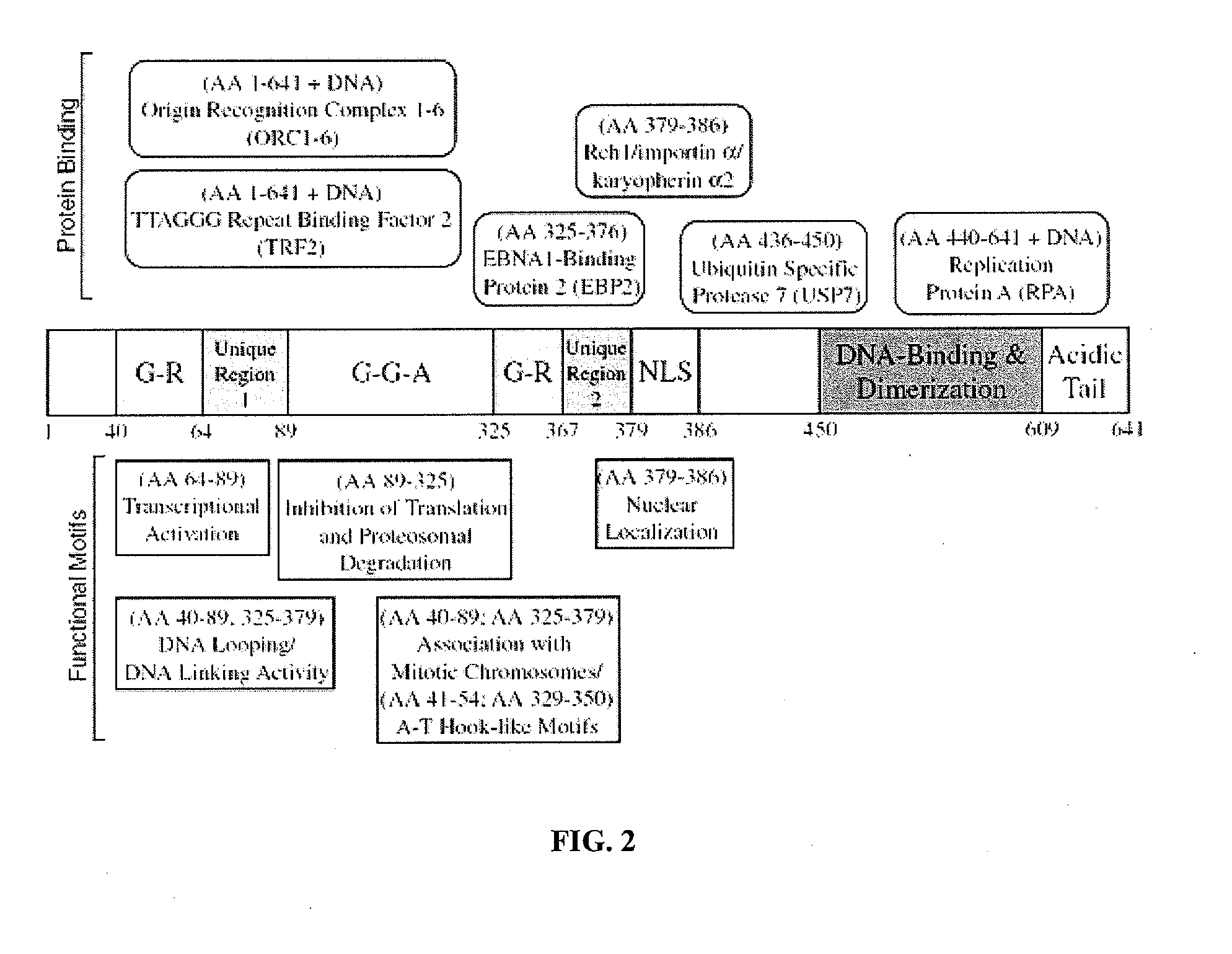Methods for the production of ips cells using non-viral approach
a non-viral, ips cell technology, applied in the field of molecular biology, stem cells and differentiated cells, can solve the problems of no approved treatment or human trial using embryonic stem cells, no targeted integration, no efficiency reduction, etc., to facilitate the generation of vector-free ips cells and expand the population
- Summary
- Abstract
- Description
- Claims
- Application Information
AI Technical Summary
Benefits of technology
Problems solved by technology
Method used
Image
Examples
example 1
Construction of a Residue-Free Reprogramming Plasmid
[0224]The inventors construct a recipient backbone plasmid which contains the oriP sequence including DS and FR separated by approximately 1,000 base pairs derived from EBV (see Lindner and Sugden, 2007) and the abbreviated form of wild-type EBNA1 known as deltaUR1 (referred to as DomNeg2 in Kennedy et al. 2003) (FIG. 3). The plasmid is currently built to express deltaUR1 driven by the elongation factor 1a (EF1a) promoter which also contains an intronic sequence to maximize the expression of deltaUR1. The backbone plasmid has been currently set up to include a selection marker for mammalian cells encoding resistance to Hygromycin; however, the choice of resistance marker remains flexible according to the sensitivity of the cell line in which the plasmid will be introduced. Similarly, the plasmid encodes drug-resistance for prokaryotic selection and, in this case, the plasmid encodes resistance to ampicillin.
[0225]The inventors inte...
example 2
Use of a Residue-Free Reprogramming Plasmid
[0228]Successful reprogramming will depend on the efficient introduction of this large (15-20 kb) plasmid into mammalian cells. The inventors are currently employing a lypophyllic-based approach to introduce the DNA into human fibroblasts; however, this approach is likely to be modified according to the cell type being transfected. For example, they would likely chose electroporation for the introduction of DNA plasmids into hematopoietic cells. Once cells are properly transfected, the inventors will place these cells on a bed of irradiated mouse embryonic fibroblasts (MEFs) or matrigel on 10 cm culture dishes using media suitable for the transfected cells. Approximately six days following transfection, the media will be changed to media specialized for reprogramming cells and replaced daily to every other day (Yu et al, 2007).
[0229]Based on our current method of generating iPS cells, the inventors will likely select colonies resembling ste...
PUM
| Property | Measurement | Unit |
|---|---|---|
| time | aaaaa | aaaaa |
| time | aaaaa | aaaaa |
| time | aaaaa | aaaaa |
Abstract
Description
Claims
Application Information
 Login to View More
Login to View More - R&D
- Intellectual Property
- Life Sciences
- Materials
- Tech Scout
- Unparalleled Data Quality
- Higher Quality Content
- 60% Fewer Hallucinations
Browse by: Latest US Patents, China's latest patents, Technical Efficacy Thesaurus, Application Domain, Technology Topic, Popular Technical Reports.
© 2025 PatSnap. All rights reserved.Legal|Privacy policy|Modern Slavery Act Transparency Statement|Sitemap|About US| Contact US: help@patsnap.com



